A physical therapist’s work is intense. Physical therapists are on their feet much of the day and spend a great deal of time using their bodies to work with patients or to lift and move them. Their relationship with the billing process is complicated at best. Billing does not need to be an overwhelming process. You can outsource your billing to experts and work with them to reduce claim denials and improve reimbursements.
Medical Codes and Terminologies are two essential things that a Physical Therapist should learn about. The Medical codes define the diagnoses, treatment, procedures, and medication used through the alphanumeric ICD-10 Coding System. In this article, we provide you a view of the physical therapy codes and terminologies.
Medical Coding for Physical Therapy
 As with all other medical specialties, the two basic coding systems that are used in PT Billing are ICD codes and CPT Codes. The ICD codes identify a diagnosis and explain a disease or medical condition. Whereas, the CPT codes explain what was done to the patient during consultation — diagnosis, treatments, laboratory, surgical procedures, etc.
As with all other medical specialties, the two basic coding systems that are used in PT Billing are ICD codes and CPT Codes. The ICD codes identify a diagnosis and explain a disease or medical condition. Whereas, the CPT codes explain what was done to the patient during consultation — diagnosis, treatments, laboratory, surgical procedures, etc.
International Classification of Diseases (ICD)
While coding for the service offered, a physical therapist has to use the latest version of International Classification of Disease, which as of 18 June 2018, is ICD-11, though the ICD-10 system continues to be the most prevalent. He/she has to diagnose the illness in a manner that insists on the medical necessity of the services offered which will result in a successful billing for the same.
Given the complex coding systems, it can be confusing to choose the right codes for the services provided. Therefore, always choose the codes that closely reflect the condition. If you are unsure about whether your codes are reimbursable under your payer’s payment policy, check with them before submission. The goal is to get maximum claims paid off in the first submission. Check out some of the common codes for Physical Therapy in here.
Current Procedural Terminology (CPT)
When billing for third parties for services, it is necessary to use CPT-4 codes to describe the service that was rendered. CPT codes are not an exact description for a physical therapist’s interventions, but they provide a reasonable framework for billing. Current Procedural Terminology codes are the most accepted nomenclature to report medical procedures and services under multiple health insurance providers.
The CPT codes relevant to a physical therapist is in the 97000 section, but you can use the codes that are most relevant to your service. You must also be aware that just because your service is legally billable it does not mean that the payer will reimburse for the services. Therefore, always check with your payer before submitting your claim.
Here are some of the common CPT codes that every Physical Therapist should know.
97110 – Therapeutic Exercise
97140 – Manual Therapy
97112 – Neuromuscular Re-Education
97530 – Therapeutic Activities
97010 – Hot/Cold Packs
97014 – Electrical Stimulation (Unattended)
G0283 – Electrical Stimulation, Medicare Non-Wound (Unattended)
97035 – Ultrasound/Phonophoresis
97161- PT Evaluation: Low Complexity
97116 – Gait Training
97162 – PT Evaluation: Moderate Complexity
97535 – Self Care/Home Management Training
97016 – Vasopneumatic Device
97032 – Electrical Stimulation (Manual)
97750 – FCE/Performance Test
97012 – Mechanical Traction
97164 – PT Re-Evaluation
97113 – Aquatic Exercise
97150 – Group Therapy
97124 – Massage
97018 – Paraffin Bath
NC001 – No Charges This Visit
97163 – PT Evaluation: High Complexity
98941- Spinal, Three or Four Regions
97022- Whirlpool
97033 – Iontophoresis
98940 – Chiropractic Manipulative Treatment (CMT); Spinal, One or Two Regions
97039 – Laser/Other
97026 – Infrared Light
Terminologies used in Physical Therapy Billing
Basics are everything when it comes to Physical Therapy Billing. Here is a list of few terminologies that are basic yet inevitable:
-
Treatment: Includes all therapeutic services.
-
Time-based (constant attendance) CPT codes: These codes allow for variable billing in 15-minute increments when a practitioner provides a patient with one-on-one services such as therapeutic exercise or manual therapy.
-
Service-based (supervised or untimed) CPT codes: These are the codes therapists use to perform services such as conducting an evaluation or applying hot/cold packs. You can only bill one code, so it doesn’t matter if you complete these types of treatments in 5 minutes or 45.
-
Order/Referral: In some cases, a physician will provide an order for therapy that includes a diagnosis and instructions for treatment.
-
Evaluation: The evaluation typically takes place on the patient’s first visit and includes an examination, which consists of a review of historical data and symptoms. It is at this point that the therapist provides diagnosis and prognosis.
-
Plan of care: Based on the evaluation—and the physician’s order, if applicable—the therapist works with the patient to develop a plan of care to help the patient meet his or her therapeutic goals.
-
Initial certification: Medicare requires ordering physicians to approve or certify the plan of care via signature within 30 days of the evaluation. The initial certification covers the first 90 days of treatment. To continue treatment past the first 90 days, therapists must receive re-certification from the ordering physician.
-
Progress report: Therapists must complete a progress report/not at minimum every tenth visit.
-
Discharge note: Once treatment is complete, therapists must complete a discharge note that details the patient’s treatment and status since the last progress note.
There are plenty of things to be learned to master physical therapy billing. But knowing the basics will help you build a foundation for a seamless and effective billing process.

